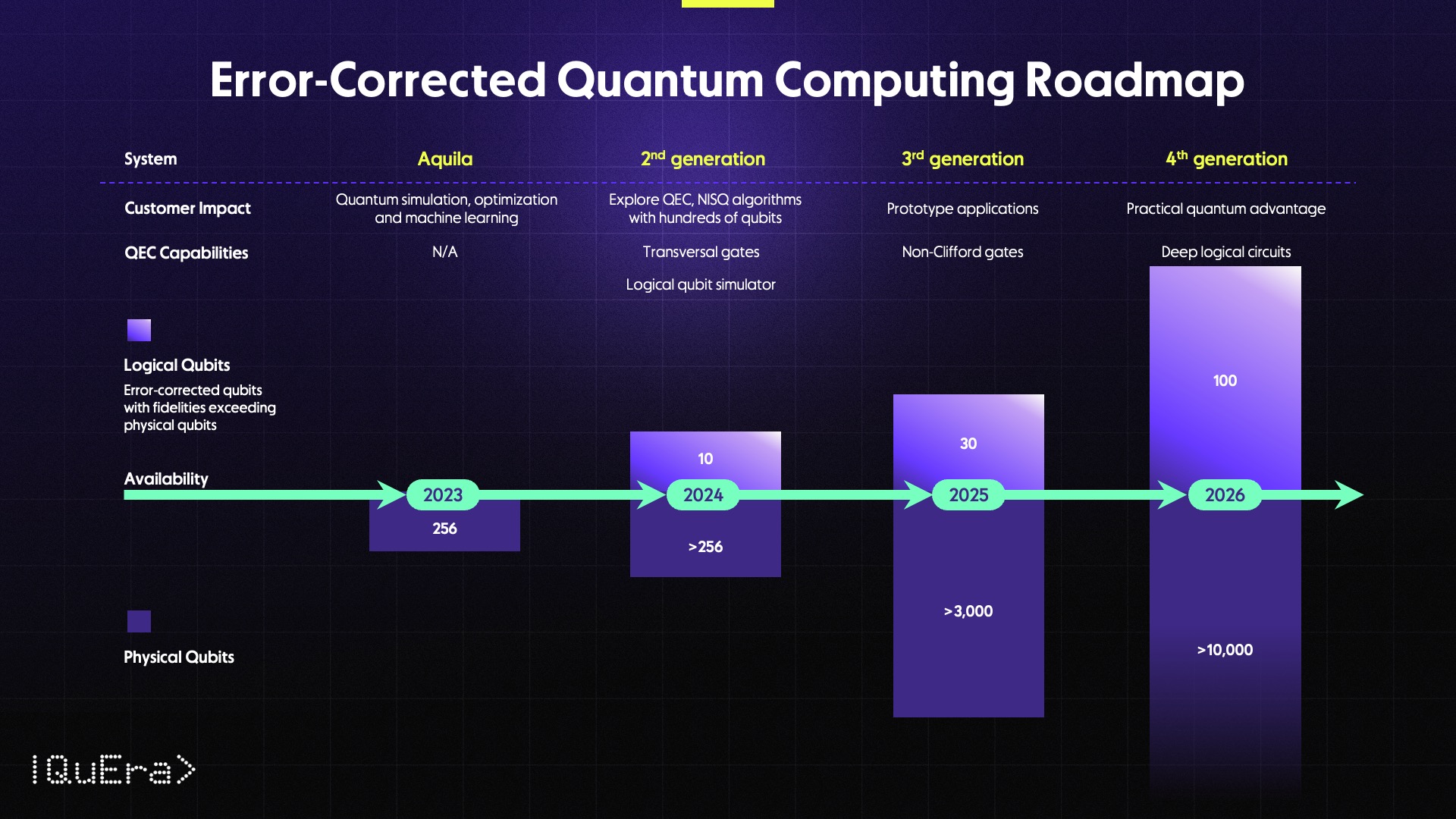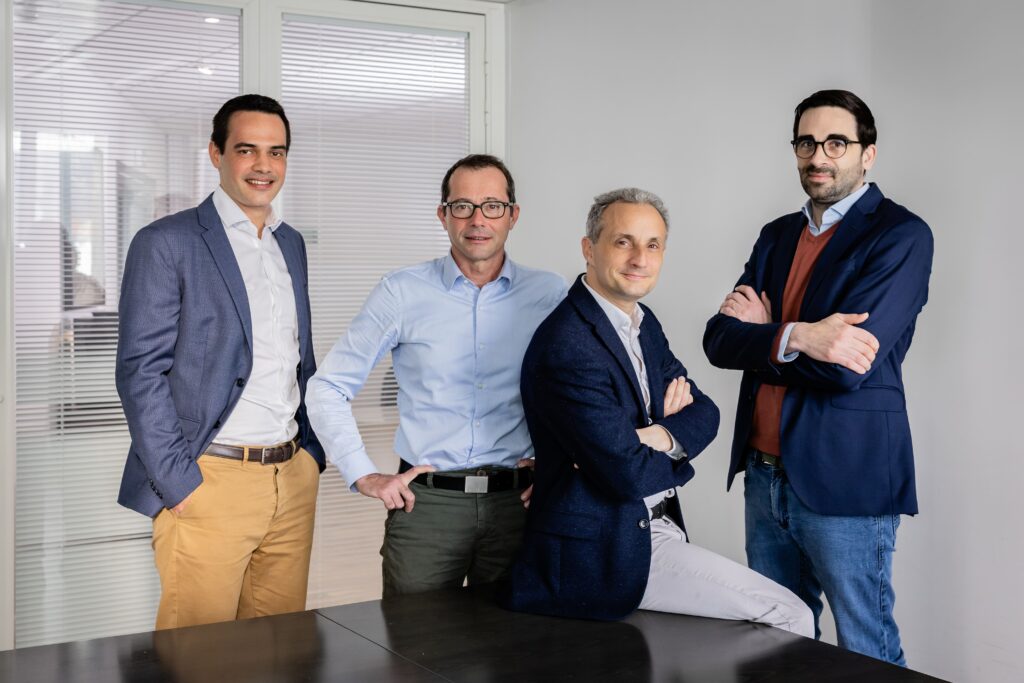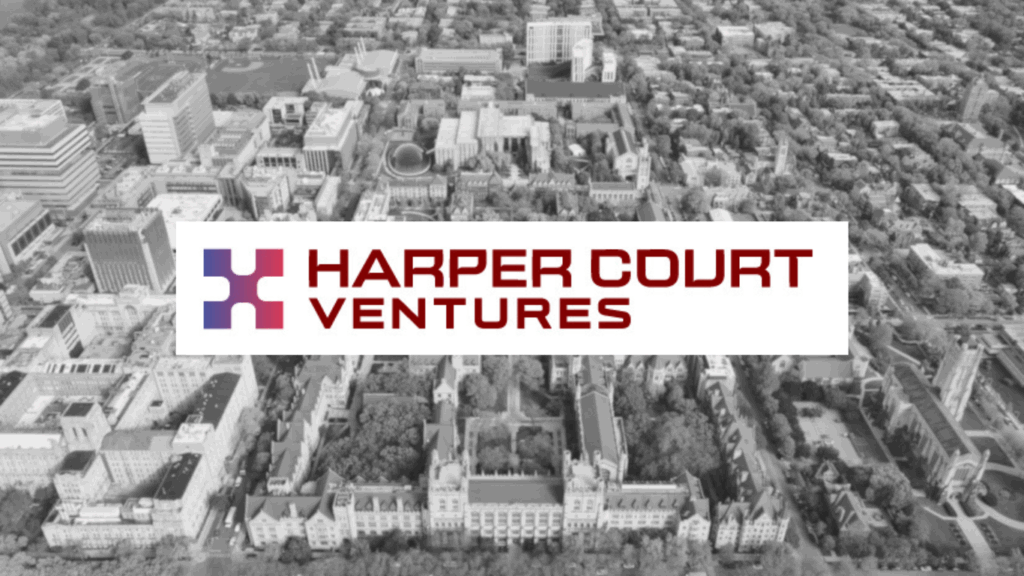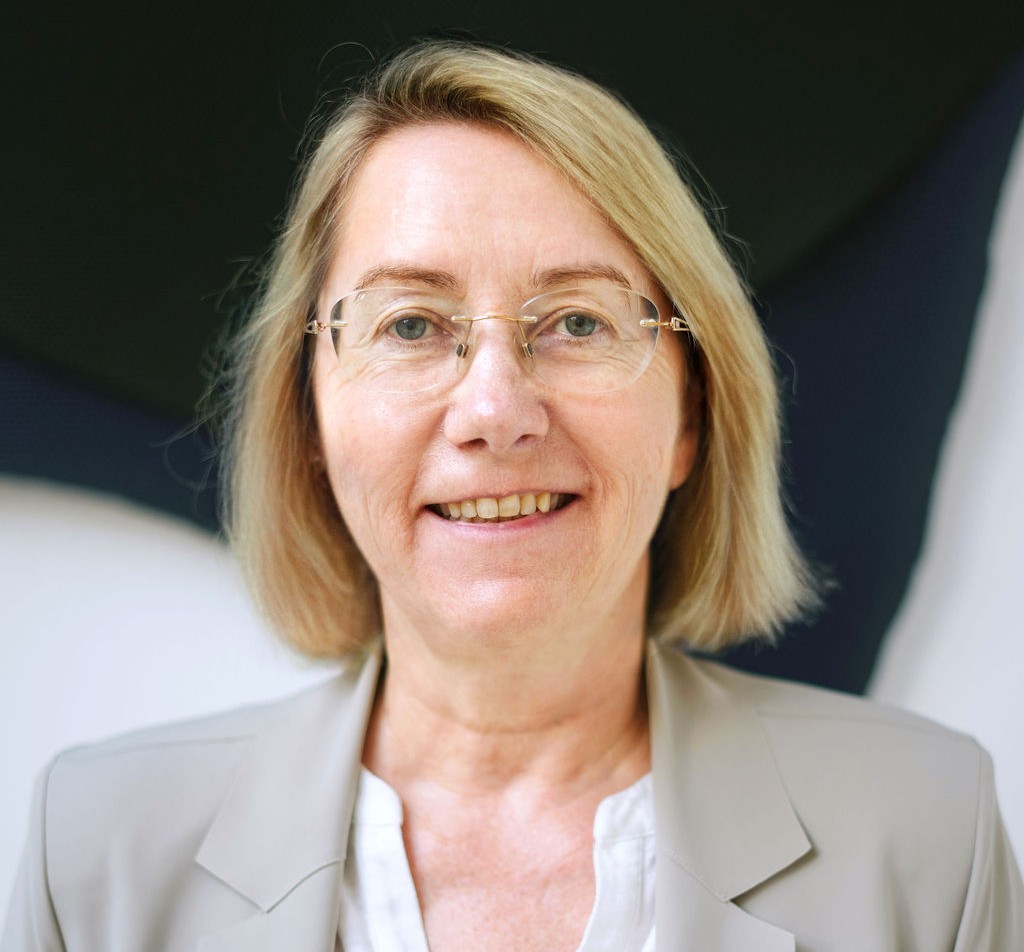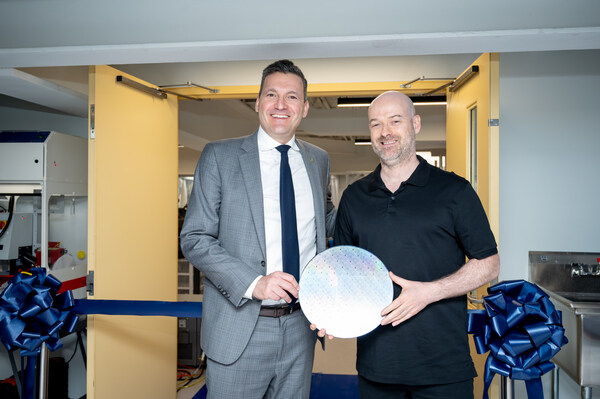By Alex Keesling
CEO, QuEra Computing
Quantum computing holds the promise of revolutionizing our approach to solving some of the world’s most complex problems, from identifying new energy-saving catalysts to developing life-saving pharmaceuticals and more. QuEra is at the forefront of this technological frontier, leading the charge toward large-scale, fault-tolerant quantum computing. This transformative journey promises to unlock new realms of computational power, making previously unsolvable challenges attainable. This article explores QuEra’s visionary roadmap and our strategic pursuit of practical quantum applications, charting a new course in the quantum computing landscape.
From Harvard Labs to Market Impact:
Born from the renowned quantum physics labs at Harvard University and MIT, QuEra showcases a pedigree of leading minds with deep expertise. Founded in 2019, we have translated academic brilliance into real-world impact, culminating in the launch of our 256-qubit Aquila machine on Amazon Braket in 2022. Aquila was the world’s first (and is still the only) commercially available neutral-atom quantum computer on the public cloud. This achievement stands as a testament to QuEra’s technical prowess and our commitment to rapidly translating academic innovation into widely-available products, democratizing quantum computing, and making it accessible to researchers and businesses alike.

Decoding the Error Correction Imperative:
Despite the immense potential of quantum computing, the inherent fragility of quantum information presents a crucial obstacle to harnessing its true power. Qubits are susceptible to errors, making it challenging to perform complex calculations with a high degree of accuracy. Quantum error correction overcomes these limitations by creating “logical qubits,” groups of physical qubits that are entangled to store information redundantly. This redundancy allows for identifying and correcting errors that may occur during quantum computations. By using logical qubits instead of individual physical qubits, quantum systems can achieve a level of fault tolerance, making them more robust and reliable for complex computations. Error correction helps translate theoretical algorithms into practical solutions.
Building with Purpose: The Four Cornerstones:
QuEra’s approach to tackling the error correction challenge builds on four key building blocks, each meticulously chosen for its unique advantages:
- Neutral Atoms: Stability & Scalability: QuEra leverages the inherent stability and scalability of neutral atoms, offering unique advantages over platforms that use trapped ions, superconducting, or other forms of synthetic qubits; these “cold,” laser-cooled atoms do not require cryogenic cooling, and are thus easier to deploy in traditional data centers. Being neutral, they have a lower vulnerability to outside interference and can be packed tightly in large numbers without loss of performance. Using currently available techniques, a single small chamber can support over 10,000 atomic qubits in an active area smaller than a millimeter, avoiding the need for optical interconnects to host a useful number of logical qubits. Moreover, the ease of manipulating neutral atoms through highly parallel optical controls facilitates the creation of larger quantum processors capable of tackling problems of greater complexity.
- Qubit Shuttling: Dynamic Reconfiguration: This innovative technique, developed by Harvard with participation from QuEra and others, enables the dynamic rearrangement of qubits within the processor. This facilitates efficient error correction protocols by bringing qubits physically closer for operations and minimizing unwanted crosstalk, reducing swap operations that lead to error accumulation. Qubit shuttling allows for flexible circuit implementation, adapting the processor to the specific needs of each computation. This “any-to-any” connectivity has been shown to allow for more compact and efficient error correction schemes and algorithms largely unavailable to processors with fixed connectivity, further advancing the path toward large-scale fault-tolerant operation.
- Parallel Operations: Speed & Efficiency: Error correction carries its own computational overhead. To address this, QuEra harnesses the power of parallel operations. Just like running multiple programs simultaneously on a computer, this allows the execution of 1- or 2-qubit gates on multiple qubits simultaneously using a single control signal, offering significant opportunities to boost overall efficiency. The combination of reconfigurability and parallelism enables the implementation of logical gates not only between physical but also logical qubits in a single step, significantly reducing the required time and resource overhead.
- Zoned Architecture: At the heart of QuEra’s approach lies the innovative “zoned architecture.” This concept, first described in the Harvard-led paper, serves as the quantum equivalent of the modern classical computing architecture which contains distinct application-specific components like memory and processing units. The zoned quantum computing architecture similarly segments the quantum processor into dedicated regions with specific functionalities.
Here’s a breakdown of the key functions within these zones:
- Storage Zone: This zone acts as the “quantum memory” of the processor, housing encoded quantum information in qubits with long coherence times.
- Entanglement Zone: Qubits from the storage zone are brought together in this zone to interact and implement entangling logical gates before being shuttled back for more stable storage in the storage zone. This zone acts as the equivalent of the Arithmetic Logic Unit (ALU) in classical CPUs where the basic logic instructions are carried out.
- Measurement Zone: This zone serves as an interface to the Input/Output (I/O) component of the processor. It allows for both high-throughput mid-circuit measurement to detect and correct errors and for the data extraction at the end of the quantum calculation.
One of the most critical advantages of the zoned architecture used by QuEra’s processors lies in its ability to achieve efficient scaling of control lines, a significant departure from the linear scaling seen in other qubit architectures. The most popular alternative approaches to quantum computing rely on an intricate network of wires controlling each individual qubit – as the number of qubits grows, so do the connections, leading to complex management for routing, cooling, and isolating them. The zoned architecture offers a convenient solution. Instead of directly controlling each qubit with distinct control lines that all need to be calibrated with a high degree of precision, zones act as intermediaries. Indeed, the Harvard experiment executed a complex algorithm with 300 qubits while using only 10 or so control lines.
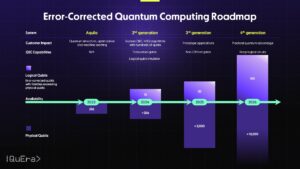
The Roadmap Unfolds: Milestones on the Horizon:
Based on these building blocks, QuEra’s vision unfolds through our carefully designed roadmap, outlining a three-year journey towards fully fault-tolerant quantum computing that goes beyond the simulation limit of classical computers:
- Phase 1 (2024): This phase marks the release of a quantum computer with upwards of 256 physical qubits and 10 logical qubits, featuring the unique capability of transversal gates between logical qubits. Transversal gates operate on all data qubits independently and simultaneously, offering inherent fault-tolerance by preventing errors from propagating between the component physical qubits in a logical qubit block. Similarly, they reduce the number of physical operations necessary to implement a logical operation on the logical qubits. For this, as well as future generations, the error rates of the logical qubits will be lower (better) than those of the physical qubits.
- Phase 2 (2025): By 2025, QuEra will deliver a more advanced model with at least 1000 physical qubits and 30 logical qubits, incorporating logical non-Clifford operations, expanding the power of the algorithms supported by the logical qubit operations. This phase signifies a significant step towards achieving fault tolerance by implementing sophisticated error correction protocols.
- Phase 3 (2026): The next-generation model will have over 10,000 physical qubits with 100 logical qubits with deep logical circuits, paving the way for large-scale fault-tolerant quantum computing. This milestone will signify the beginning of a new era for quantum computing where we expect hardware-enabled heuristic algorithms beyond the predicting power of classical computing to emerge and begin to tackle previously unsolvable problems across diverse industries, from materials science and drug discovery to finance and logistics.
These systems will first be available to customers by working directly with QuEra. After that initial period, they will be available publicly via the cloud and for on-premises deployment. In fact, we recently won a contract to deliver such a quantum testbed to the UK’s National Quantum Program.
Exploring Possibilities with the Logical Qubit Simulator
While charting the roadmap for future hardware advancements, QuEra doesn’t limit itself to physical realizations. We understand the importance of theoretical exploration and validation. That’s where our logical qubit simulator comes in, acting as a powerful software tool to dive into the heart of fault-tolerant quantum computing.
This platform will act as a virtual laboratory where developers and researchers can test and optimize quantum algorithms without relying on physical hardware. This simulator replicates the instructions and behavior of qubits within the zoned architecture, enabling the exploration of complex error correction protocols and circuit designs in a simulated environment. This allows for efficient testing and refinement of algorithms before investing in hardware development, saving valuable time and resources.
Beyond the Horizon: A Glimpse into the Future:
While this roadmap provides a concrete plan for the next few years, QuEra’s vision extends beyond. We are actively researching even more advanced error correction techniques, aiming to push the boundaries of what’s possible. Additionally, at QuEra we are exploring diverse applications of our technology, collaborating with leading organizations across various industries to discover and solve real-world problems with the power of quantum computing.
Charting a Course of Transformation
QuEra’s roadmap paints a compelling picture of progress, navigating the intricate path towards fault-tolerant quantum computing. However, the significance of our journey extends beyond technical milestones. QuEra’s approach holds the potential to unlock a paradigm shift in various industries, transforming how we tackle some of humanity’s most pressing challenges, whether in drug discovery, material research, energy storage and beyond.
These are just a glimpse into the transformative potential of fault-tolerant quantum computing. We invite forward-thinking leaders, researchers, and innovators to join us in this groundbreaking journey. Whether you’re looking to solve complex problems in your industry, explore quantum computing’s potential applications, or simply stay ahead of the technological curve, we encourage you to reach out and explore how our quantum computing platform can help you realize your vision.
For more market insights, check out our latest quantum computing news here.

